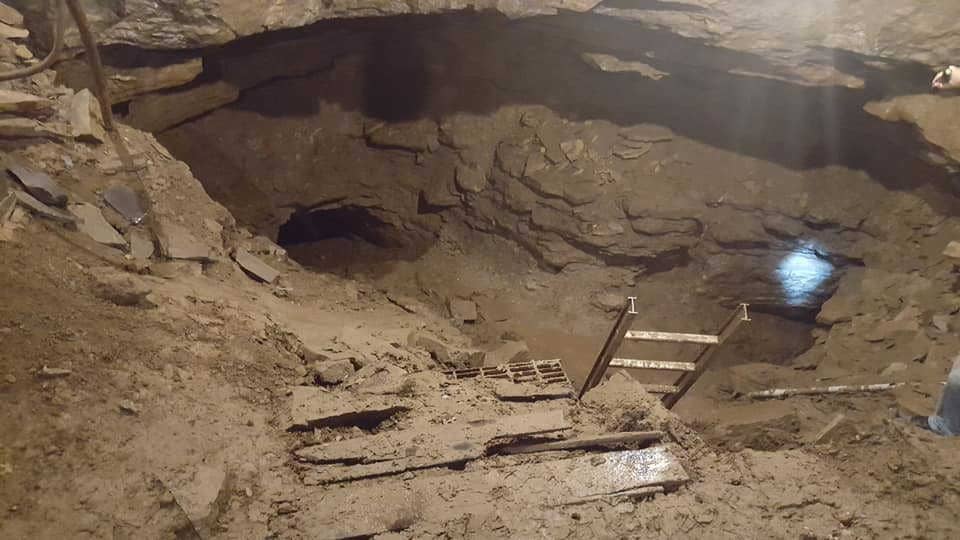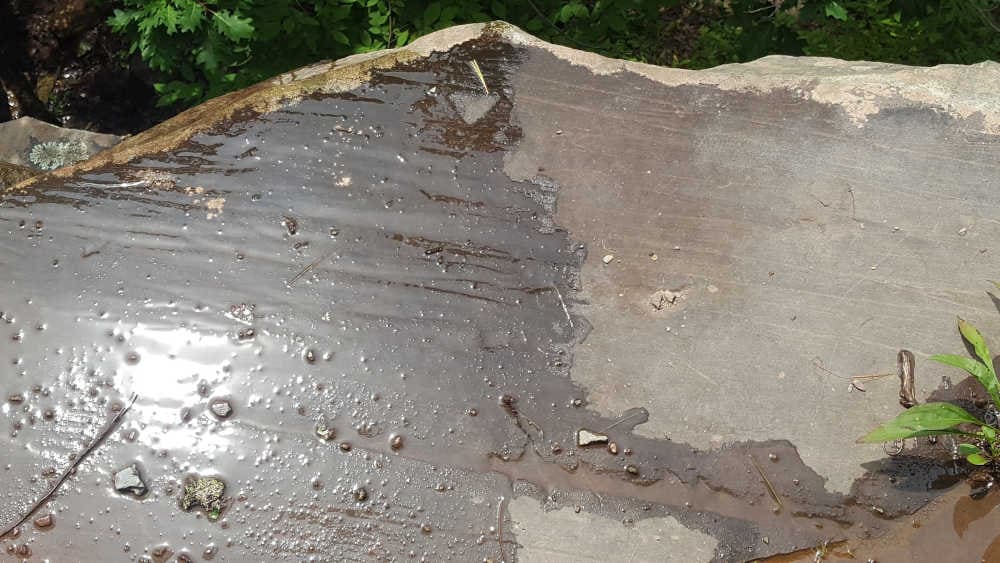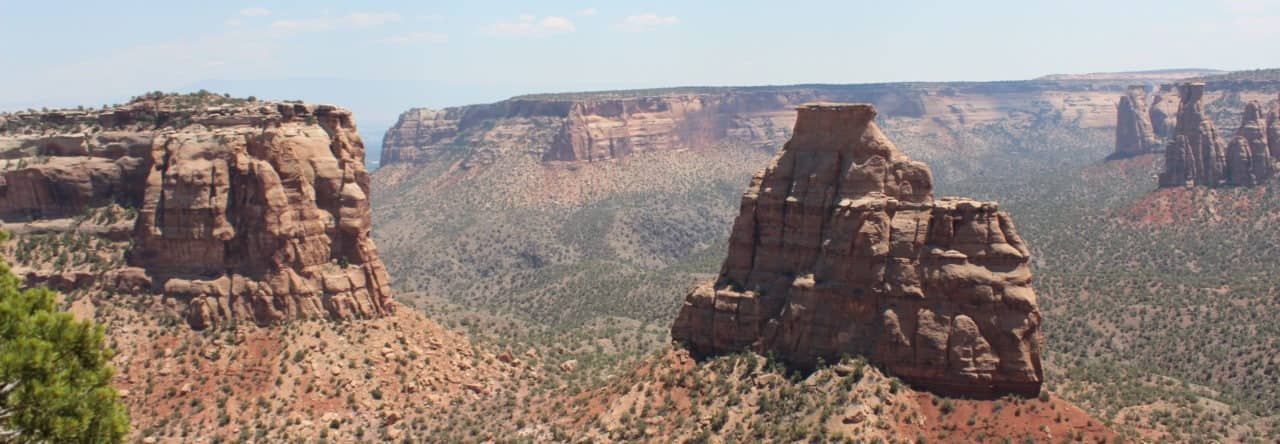New York State is full of the concepts that are discussed in my Earth Science class. Here are some examples of things I have come across in my travels. Hopefully this inspires you to get out and explore the state!
Weathering & Erosion
Karst Topography
Carbonic acid dissolved portions of the limestone bedrock leaving behind several caverns. This is a small tunnel that I had the privilege of climbing through in the original entrance of Howe Caverns.

Glacial Striations
Tens of thousands of years ago much of the state was covered by ice. The sheer weight of the moving ice caused sediments caught between the ice and the rock to scratch and polish the bedrock.

Glacially Polished Bedrock
Glaciers wore away and polished this bedrock which slopes down into this pond.

Macomb Slide
Steep, mountainous areas have trouble hanging on to the little bit of soil they have. This is one of many slides in the Adirondacks. Heavy rains will cause sediment and rocks to erode downhill.

Potholes in Granite
Water can be a powerful force over long periods of time. As the water moved over these rocks, a circular current caused the sand to wear away the rock.

Unconformity
There are about 700 million years of rock missing between these two layers. Weathering and erosion are to blame!

Chattermarks
These crescent shaped features were formed when a rock frozen at the base of the glacier chipped away at the bedrock.

Differential Weathering
Bedrock weathers at different rates depending on its composition. The top and bottom layers are weathering faster while the middle layer sticks out because it is more resistant.

Faulted Bedrock
At some point in the last few hundred million years crustal movement caused this fault. This caused the bedrock on the left to be higher than the corresponding layers on the right.

Glacial Erratic
This boulder was picked up and carried by a glacier. At some point the glacier dropped it off on this ledge.

Roche Moutonnée
As the glacier moved up the right side of Vroman’s Nose it scoured the surface. As the glacier moved down the left side it plucked the rock which produced this asymmetrical formation.

Sedimentary Rocks
Catskill Conglomerate
Let’s go back in time about 380 million years. Looking east you would have seen a mountain range that rivals the Himalayas of today. Heavy rains would bring sediment from the mountains, depositing it in the eastern edge of the Catskill Delta.


Tufa
Saratoga is home to several mineral-rich natural springs. This water contains calcium carbonate and as the water flows out of the Earth, this mineral precipitates out and builds up.

Cross-Bedding
The Catskill delta of 380 million years ago is similar to the Ganges River Delta of today. Meandering streams covered this broad, flat plain. The path of these streams changed over time leaving layers of deposits at different angles.

Ripple Marks
These marks provide evidence of flowing water when this area was covered by sand. The water would have been flowing from the top-left towards the bottom right. We know this because the ripples are more gradual on the left side.

Eternal Flame Falls
Natural gas stored deep beneath the ground makes its way to the surface through cracks in the rock. This waterfall is one spot that it is released.

A Flooded Floodplain
I sent this picture to Dr. Titus to get his thoughts. The red sandstone is typical of a seasonally dry terrestrial climate. Oxygen seeps in and iron oxides form. The green layer likely formed from a flood event where the soils stayed saturated for a while. The green that makes its way into the red layer most likely occurred because of roots in the soil.

Pages: 12
